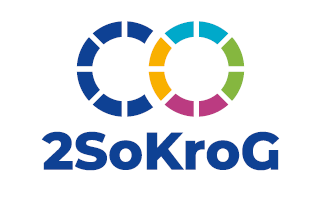2SoKroG: Social activation
The project titled 2SoKroG: Social activation to create a healthy, safe and more accessible cross-border area prioritises the area of social security and employment services with the goal of strengthening partnerships among public institutions and stakeholders in the area of social activation.
Project purpose and background
There is a great deal of need in the cross-border area for the development of integral social-activation programmes due to the difficulties that appear on both sides of the border associated with the long-term social fragility of vulnerable target groups due to unemployment, from health problems to a low level of information and inclusion in society.
The social activation objective (SAO) is to help the long-term unemployed and long-term recipients of cash social assistance to (again) become active members of society, if possible, including through employment, so that they become more motivated to face life changes and improve their psychosocial health.
In order to improve and upgrade public services using the SA model, it will be crucial to increase the institutional capacity of public institutions, develop competences and provide appropriate training of public services staff, with the help of which at the end of the social activation programme members of vulnerable target groups will be qualified for a more successful entry onto the labour market.
The overall project objective is to increase the institutional capacity of public authorities and stakeholders and foster efficient public administration by promoting legal and administrative cooperation and cooperation between citizens and institutions.
Expected results of the project
As an innovative public services model, 2SoKroG upgrades the system of social transfers, which currently prevent absolute poverty but do not provide sustainable solutions, and according to the demographic indicators represent a serious problem.
In order to improve and upgrade public services using the social activation model, it will be crucial to increase the institutional capacity of public institutions, develop competences and appropriate training of public services staff, with the help of which at the end of the social activation programme members of vulnerable target groups will be qualified for opportunities on adjusted forms of the labour market and become integrated into various social systems.
In the cross-border area the project can achieve the first, already tested in practice SAO, which will be crucial to the transformation of the work of the social services centres (SSCs) and the employment offices (EOs) at the employment services as the key public institutions for changing the status quo, i.e.:
- establishing and enhancing the cross-border cooperation structure of public institutions and vertical connections in the area of SA,
- development and testing of an innovative SA model at the social work centres and employment offices in order to empower vulnerable target groups towards increased social inclusion and employment (in social entrepreneurship and other adjusted forms of the labour market in the cross-border area),
- development of the competences and skills of civil servants in carrying out social activation programmes for the creation of a healthy and safe environment in the cross-border area,
- improving the timely recognition of various risks of slipping into poverty with the help of a prevention programme and (non-)media campaigns,
- the transfer of the cross-border results and experiences, and the practices developed within the project, to other regions and areas of interest.
Target groups
The project includes social work centres, employment offices, educational institutions, local and regional development institutions, social enterprises, non-governmental organisations and the local population in the border areas of Slovenia and Croatia.
Partnership
The project consortium comprises public institutions in the relevant Slovenian (Drava, Savinja and Central Slovenia) and Croatian regions (Varaždin and Međimurje counties), as follows:
- from Slovenia
- Bistra Ptuj Scientific Research Centre (lead partner)
- Razvojna agencija Savinjske regije, d.o.o. (Savinja Regional Development Agency), Celje (RASR)
- Center Ponovne Uporabe, d.o.o., so.p., (Repurposing Centre) Ormož (CPU)
- Employment Service of Slovenia – Ptuj Regional Office
- from Croatia
- Centar za socijalnu skrb Čakovec (Čakovec Social Welfare Centre)
- Javna ustanova za regionalni razvoj Varaždinske županije (Varaždin County Regional Development Institute), Varaždin (JURA)
- Javna ustanova za razvoj Međimurske županije REDEA (Public Institute for the Development of Međimurje County), Čakovec (REDEA).
Implementation
The project will be carried out from 1 September 2018 to 31 August 2020 as part of the Cooperation Programme Interreg V-A Slovenia – Croatia in the 2014-2020 period, Priority axis 3: A healthy, safe and accessible border region.
Value and funding
The project, whose total value is EUR 574,947.17, is 85% co-financed with funds from the European Regional Development Fund (EUR 488,705.06); the share of Ptuj Regional Office is EUR 55,939.24.
More information
Follow the project: webpage


Thanks for your feedback. It will help us improve our website. Please do not enter any personal data such as your name, surname or e-mail address.